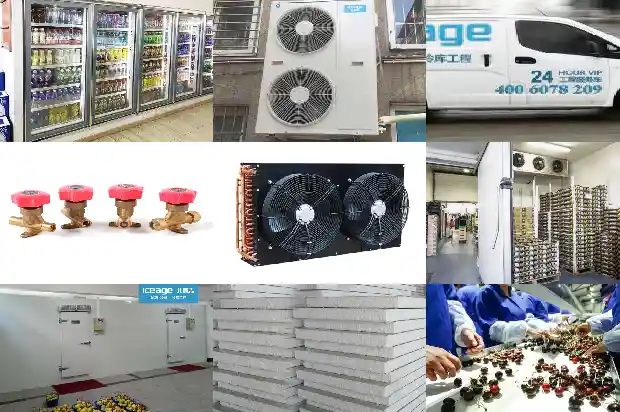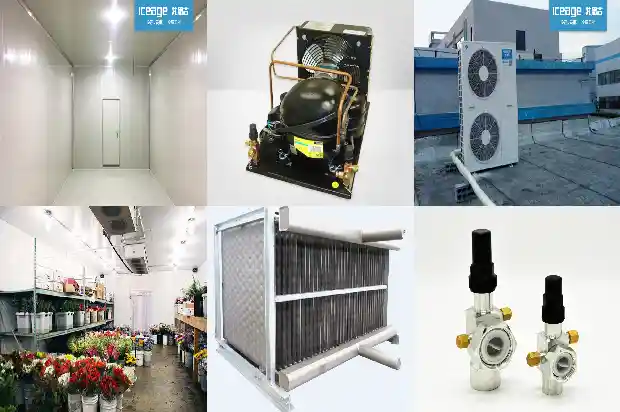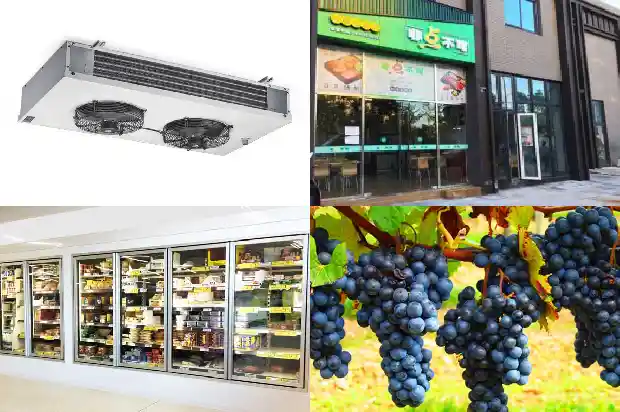Air - conditioner Low - pressure Alarm? These Nine Common Causes
2025-02-14
Air - conditioner low - pressure alarm is one of the most common problems in maintenance work, and there are various reasons for it. In fact, we have published many articles regarding the issues of excessively low low - pressure in the air - conditioner system or low - pressure alarm. However, some friends are still asking about it, and quite a few have asked recently. Therefore, this article is specially shared. The following is an analysis of the low - pressure alarm in air - conditioners, and I hope it will be helpful to you.
- The copper pipes of the air - conditioner refrigeration system are too long:
During the commissioning process, the low - pressure alarm time set for some air - conditioners at the factory is relatively short (usually 120 seconds). When the copper pipes of the air - conditioner being commissioned are long, it will prolong the time for the refrigerant to return to the evaporator, resulting in a low - pressure alarm fault.
Solution: The low - pressure alarm time can be increased to 180 seconds. In an environment with weather changes, the low - pressure alarm time also needs to be appropriately increased. - The filter screen of the indoor unit of the air - conditioner is dirty and blocked:
Air circulation will adsorb dust in the environment onto the surface of the air - conditioner filter screen. Some users may ignore this problem. Day after day, the air - conditioner filter becomes too dirty, and the evaporator freezes, leading to a low - pressure alarm fault in the air - conditioner.
Solution: Replace the filter screen of the indoor unit of the air - conditioner. - The drying filter is dirty and blocked or the copper pipes are oil - blocked:
Copper pipes need to be welded for connection. Some copper slag cannot be completely removed by blowing dirt. The dirt in the refrigeration system will accumulate in the drying filter. During the operation of the air - conditioner refrigeration system, there will be a temperature difference at both ends of this filter.
Solution: In the case where the filter is extremely dirty, the refrigeration system needs to be blown with dirt again or cleaned. The general treatment method is to replace the drying filter with the same model and specification. - The low - pressure protector in the air - conditioner refrigeration system is faulty:
We conduct a gauging test on the air - conditioner refrigeration system. When the pressure is normal, measure the low - pressure protector circuit with a multimeter, or short - circuit the low - pressure protector and start the compressor. If the refrigeration cycle is normal, it indicates that the low - pressure protector is faulty.
Solution: Replace the low - pressure protector with the same specification and model.
- The liquid return pipeline in the air - conditioner refrigeration system is flattened, resulting in poor liquid return:
The probability of this situation occurring is relatively low. It is necessary to inspect the copper pipes to find the flattened position.
Solution: Locate the flattened position of the copper pipe and replace it with a copper pipe of the same specification. - The solenoid valve in the air - conditioner refrigeration system cannot open:
When the refrigeration system is running, the sound of the solenoid valve opening can be heard. If the solenoid valve does not open, the low - pressure will gradually drop until a low - pressure alarm occurs. Reset the alarm on the air - conditioner control panel, and the low - pressure will not rise. At this time, measure the solenoid valve coil. If there is a resistance value, it is normal; if it is infinite, it indicates that the coil has burned out.
Solution: Replace the solenoid valve coil with the same specification and model.
- The expansion valve in the air - conditioner refrigeration system is faulty:
If the expansion valve is faulty, when the refrigeration system is running, the low - pressure cannot rise, and the high - pressure cannot go up either. Adding refrigerant will not make the low - pressure rise.
Solution: First, adjust the opening degree of the expansion valve. If there is still no effect, replace the expansion valve with the same specification and model (Note: It is necessary to check whether the expansion valve is dirty - blocked or ice - blocked).
- The refrigerant in the air - conditioner refrigeration system leaks:
First, conduct a gauging test on the air - conditioner refrigeration system. If there is no pressure indication as soon as the gauge is attached, it means that the refrigerant in the refrigeration system has leaked out completely. If there is still pressure at this time, the refrigeration system can barely operate. Adding refrigerant will cause the pressure to rise immediately, which also indicates refrigerant leakage.
Solution: First, inspect each position of the refrigeration system to check for signs of oil leakage. Focus on checking the oil - leaking positions with dishwashing liquid. If necessary, conduct sectional pressure - holding on the refrigeration system and then conduct inspections. After finding the leakage point, weld to repair the leak and re - commission the refrigeration system. - The heat dissipation effect of the condenser in the air - conditioner refrigeration system is too good:
This mainly occurs in an environment with a low temperature, such as in winter. We can often see that some cooling tower equipment needs to turn off the fans in winter because the condensing pressure is too low.
Solution: Increase the starting pressure of the air - conditioner; or modify the outdoor fan to a variable - speed fan, which can better solve the problem.
Related Articles
- Influence of Fin Spacing of Evaporator in Air Cooler on Frost Formation
- Air - side Economizer
- Winter Approaches: How to Solve the Low High - pressure Issue of Air - cooled Condensing Units?
- What Are the Common Causes of Cold Air Blower Noise?
- How to Troubleshoot and Repair High - pressure Protection of Air - cooled Units?
- What Exactly Are the Ten Typical Malfunctions of Air Conditioners?
- What Misconceptions Should Be Avoided in Low - temperature Refrigeration System Repairs
- Practical Knowledge on Freeze Protection of Air - conditioning Equipment
- Remember! 3 Steps to Calculate Central Air - conditioner Cooling Capacity
- How to Read the High - and Low - Pressure Gauges of Refrigeration Air - conditioners?
- Analysis of Seven Reasons for Ice Formation in Computer Room Air Conditioners
- Selection of Bypass Control Valves for Air - conditioning Water Systems
- Common Faults and Solutions of Central Air - conditioning Chiller Units
- Could a Tiny Copper Tube Cause a Multi - split Air Conditioner to Stop Cooling? Refrigeration Workers Must Pay Attention!
- Maintenance Techniques for Air - conditioning Refrigeration Systems
- Considerations in Selecting Packaged Air Conditioners and Their Heat Recovery Operations
- Characteristics and Differences among Water System, Air System and Refrigerant System
- Eight Misconceptions in Refrigeration Equipment Repair
